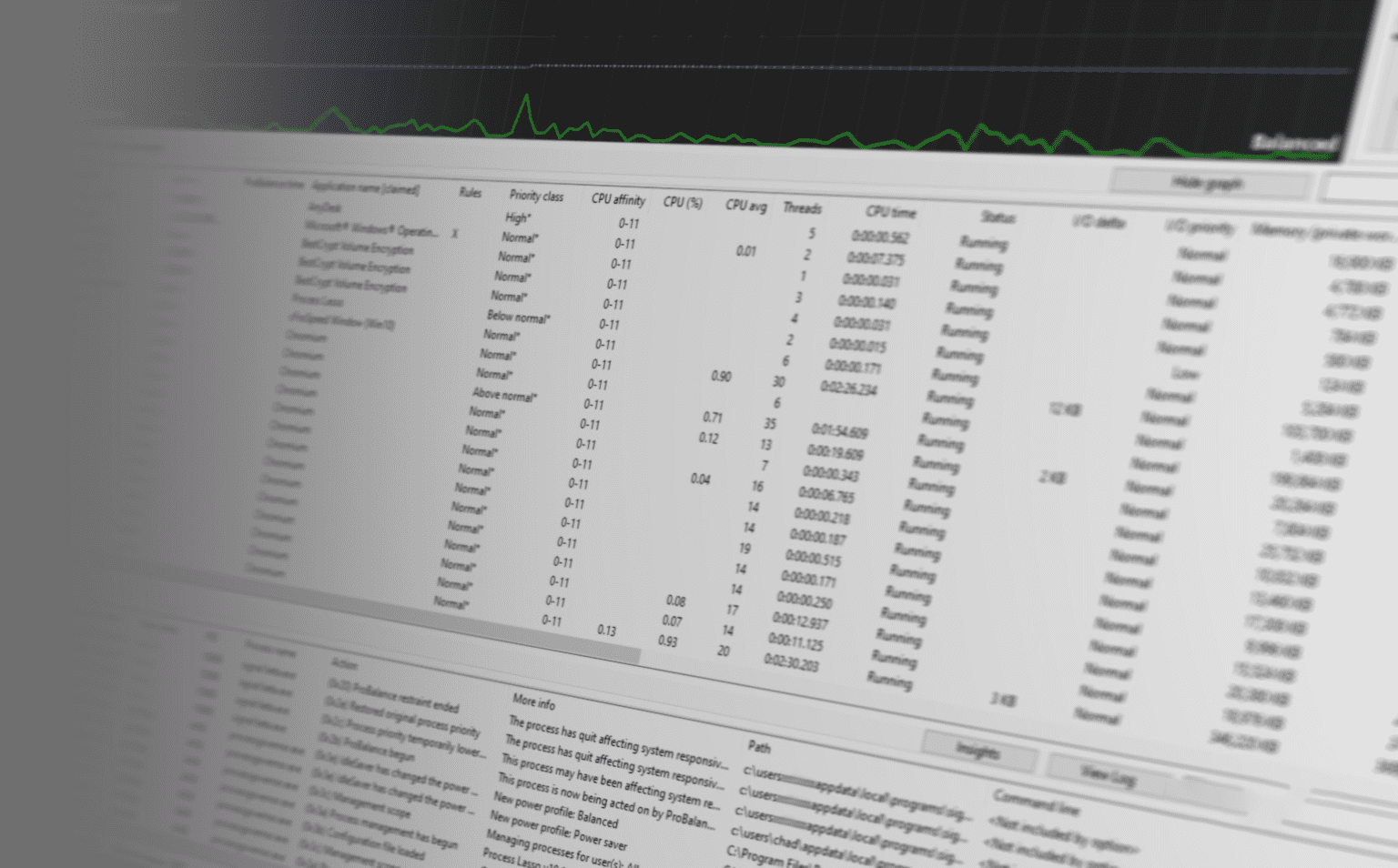So, I stumbled onto this very cool optimization tool for Windows called Process Lasso. I believe it’s fairly well known in the PC gaming community, but instead of butchering the explanation myself, I asked Jeremy – the creator of Process Lasso – if he would be so kind as to answer a few of my questions.
Here’s a quick chat we had about what the program actually does and why he decided to create it.
An Interview with Jeremy, the creator of Process Lasso…
Jeremy, let’s start with the basics: could you talk a little bit about Process Lasso, and why you decided to create it? Was there are particular failing with Windows that just made you go “you know, I could do better…”?
Process Lasso was born from a deficiency in the Windows thread scheduler that allows a normal priority process to starve the rest of the system of CPU cycles. Before multi-core CPUs, the problem could be so severe that it required a hard reset to recover. Our famous ProBalance algorithm elegantly solves this by making a marginal dynamic adjustment to the priority class of problematic processes.
From there, Process Lasso evolved to offer other algorithms, automation, and settings to enable users to run processes their way!
Who stands to gain the most from using this? Just gamers, or is this valuable for devs, people working in media, etc?
Anyone with a Windows PC can benefit from Process Lasso by simply installing it, but gamers, content creators, developers and other tech savvy users are able to make the most of it.
For someone that’s just installed the app and done the basic configuration, what can they expect to notice right away?
Immediately after installation, Process Lasso’s ProBalance algorithm will help mitigate the impact of background processes on the foreground application or game, and its Performance Mode will ensure the CPU is in a power configuration that keeps it ready to quickly handle bursting CPU loads. More tech savvy users can certainly benefit further by tuning how their processes run, and how Process Lasso’s algorithms are deployed.
Is there a particular feature that most people don’t know about or talk about often that you feel is especially useful?
Personally, I’ve always felt that IdleSaver, a feature to automatically downgrade the power profile when the user goes idle, is under-utilized. It is a great way to keep a PC in a high performance power profile while the user is active, but still conserve energy when idle. That said, it is most useful for people like me who keep their PC on continuously (never sleeping), so perhaps that is why it hasn’t been heavily adopted. Also, the other power profile automation features of Process Lasso are capable of switching to a high performance power profile, such as Bitsum Highest Performance, when using a demanding game or application.
What’s the biggest misconception that people seem to have about Process Lasso?
One understandable misconception is that users should set their important processes to a ‘High’ or even ‘Real-time’ priority class. Due to the way the Windows thread scheduler works, that is not effective at improving responsiveness, and can even be detrimental in some circumstances. ProBalance works from the opposite direction, lowering the priority class of problem processes, and that is the proper approach.
Mind talking a little about the future of the app? I’m curious if you have some wild new features in the pipeline.
Process Lasso is in a continual state of development, with new features always in the pipeline. However, there is nothing I want to disclose today.
Are there any other Windows apps that are completely indispensable to you?
Nothing but the usual. I’d never run a PC without Process Lasso, and so I’ve built many essential automations into it.
